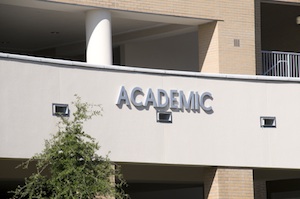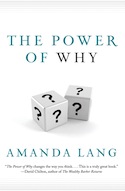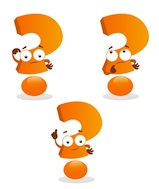 Academics. Most of our current school system revolves around it, and yet, I think it falls miserably short of what our kids need. To be honest, I think our academic system of education is highly overrated, at best. At worst, it destroys a number of our kids.
Academics. Most of our current school system revolves around it, and yet, I think it falls miserably short of what our kids need. To be honest, I think our academic system of education is highly overrated, at best. At worst, it destroys a number of our kids.
Hear me out. I’m not saying that our kids shouldn’t learn to read, or do math, or develop other valuable skills. But too often, the focus of our kids’ school day is Content with a capital C, with little connection to why it matters. Instead of learning together, many of our students spend hours filling in worksheets or copying down lecture notes that they could google in 30 seconds.
Too often the lectures they listen to are boring and irrelevant to their lives. And from my experience, most of this content is simply memorized, spewed out for an exam and then quickly forgotten. But beyond this, there’s often only one right answer, which frequently cultivates in our students a fear of failure.
Schools value hoop jumping
For the most part, kids who we consider “academic” tend to be good hoop jumpers. They’ve figured out the system and can navigate their way through the predictable demands of the system. But they are seldom truly engaged. Rarely are they transformed by their learning. They’re going through the motions.
 Research shows that some of the least engaged students are the highest achievers. Think about that. They do well because they know how to “do school.” Is this really the best we have to offer them?
Research shows that some of the least engaged students are the highest achievers. Think about that. They do well because they know how to “do school.” Is this really the best we have to offer them?
What if you’re not “academic”? Most of these kids pass through too many years of their young lives feeling like they don’t measure up. Feeling stupid. And for some, it radically alters their trajectory of their adult lives. Unfortunately, too many students have to recover from school once they graduate. Is this really what we want for them?
I used to teach this way
In all honesty, I have to admit that I used to believe in this academics-oriented system. For too many years my students sat in straight rows. I asked the questions. I had the answers. I controlled the learning.
The truth is I did this because it’s what I knew. It’s how I’d been trained. It’s what I saw replicated in universities and in other teachers’ classrooms. I sincerely believed that good grades mattered.
I’m an English teacher, and I subscribed wholeheartedly to the belief that the pinnacle of success in English was the ability to write “the essay.” But I’ve radically changed my position. I’ve come to believe that the traditional essay is one of the most useless things we teach our students.
Recently, I’ve started to ask people I know, “Do you ever write an essay?” I’ve never had one person say yes. I wonder how many teachers, except those who are taking university classes (or writing an opinion piece like this), ever write true essays. If I may be so bold, I wonder how many English teachers frequently write essays.
I’m not saying our kids shouldn’t be able to write. On the contrary, I think our students should be able to argue gracefully and persuade powerfully. They also need to know what they believe and why. I simply think the essay is a medium that has outlived its usefulness, at least in high school.
Academics for the academicians
 I’ve come to realize that being “academic” doesn’t tell you much about yourself. It tells you you’re good at school, which is fine if you plan to spend your life in academia, but very few of our students do. It doesn’t indicate whether or not you’ll be successful in your marriage, raising your kids, managing your money, or giving back to your community. All things that matter much more than being good at school.
I’ve come to realize that being “academic” doesn’t tell you much about yourself. It tells you you’re good at school, which is fine if you plan to spend your life in academia, but very few of our students do. It doesn’t indicate whether or not you’ll be successful in your marriage, raising your kids, managing your money, or giving back to your community. All things that matter much more than being good at school.
School should be a place where kids can discover what they love. They should be able to ask the questions that matter to them and pursue the answers. They should discover what they are passionate about, what truly sets their hearts and souls on fire. They should discover they can make a difference now. Above all, they should leave school knowing what they are good at.
Today, I think most kids graduate only knowing if they’re good at school or not. Often our students have many talents; they just don’t fit in our current curriculum because their talents are likely not considered “real knowledge.” And what is that? In the Biology curriculum that I’ve taught for the past several years, one of the objectives that my students need to know is earthworm reproduction. Really? Out of all the things we could be teaching a 17-year-old about biology, someone (a whole panel of someones, we can guess) decided earthworm reproduction was essential?
Our students lose their curiosity
We are born curious. Babies explore their environments to learn; they do it naturally without being told. Three-year-olds constantly, at times annoyingly, ask, “why?” And yet, by the time my students arrive in Grade 10, they have all but lost their curiosity. Consequently, when I get a new class of students, we start by unlearning.
We begin by imagining what school could be, instead of what they’ve known for 10 years. Only then can we move into the work that will help them become lifelong learners who truly enjoy the search for answers, rather than the mark at the top of their exam.
 Recently I’ve been reading Amanda Lang’s The Power of Why. In it she states:
Recently I’ve been reading Amanda Lang’s The Power of Why. In it she states:
Curious kids learn how to learn, and how to enjoy it – and that, more than any specific body of knowledge, is what they will need to have in the future. The world is changing so rapidly that by the time a student graduates from university, everything he or she learned may already be headed toward obsolescence. The main thing that students need to know is not what to think but how to think in order to face new challenges and solve new problems (p.14).
Learning how to learn and fail and learn some more
Our school system doesn’t need to create kids who are good at school. Instead, we need to create an environment that engages learners, fosters creativity, and puts responsibility for learning where it belongs – with our students.
Instead of rote learning, teachers need to use content to teach skills. We need to build environments that allow our students to get messy and build things. Places where students learn how to learn, and know how they learn best. Where students engage in significant research, and learn how to identify credible resources amidst a plethora of information that, at times, may seem overwhelming.
Furthermore, our students need to be able to problem-solve, innovate and fail over and over again. Throughout all of this, our kids should be collaborating with each other, as well as virtually with students across the globe. They need to be able to communicate powerfully using the mediums of print, photography and video.
Three questions to guide student-driven learning
 As I’ve worked with my students, we’ve come to realize they need to be able to answer three questions, regardless of what we’re researching:
As I’ve worked with my students, we’ve come to realize they need to be able to answer three questions, regardless of what we’re researching:
– What are you going to learn?
– How are you going to learn it?
– How are you going to show me you’re learning?
How they get to this last question is often their decision. And what they come up with never fails to surprise me.
My classroom hasn’t always looked like this. But over the past three years we’ve shifted to a constructivist pedagogy that has transformed not only my thinking, but my students as well. Now we learn in an inquiry, PBL, tech-embedded classroom.
The journey at times has been painful and messy, but well worth the work. The biggest lesson I’ve learned is that my students will often exceed my expectations, if only they’re given the chance.
Read more of Shelley Wright’s posts here at the PLP Voices blog.
Shelley Wright
Latest posts by Shelley Wright (see all)
- Start with Why: The power of student-driven learning - May 8, 2019
- Are You Ready to Join the Slow Education Movement? - August 26, 2014
- Academic Teaching Doesn't Prepare Students for Life - November 7, 2013


I couldn’t agree more! When I made the transition from conventional education to Montessori, I didn’t quite get it. But after teaching using the Montessori method, and raising my son in a Montessori environment, it has become more and more clear that conventional education is producing test takers, not thinkers. Those who think and question are often quieted while those who test well are promoted. Test takers, sheep, lemmings…they’re all followers. The thinkers will be our leaders.
I think you should be more careful in calling kids who have mastered test taking followers and lemmings. These kids might be very creative, but in a way that has allowed them to creatively navigate the system of conventional learning.
I agree with “Studen”. Just because someone is intelligent and can pass a test successfully shouldn’t label them as “sheep, lemmings” or “followers.” That fallacy doesn’t make sense what so ever.
I bet it takes a lot of intelligence to memorize dozens of names, dates, and equations. There is a difference between “Intelligence” and “Knowledge” that most people do not understand because they have become mindless sheep.
I AGREE!!!!!!!!!! THats why i dropped out..
Wow Shelley great post. This goes to the core of what I’m currently teaching parents and industry as to why our young 18+ are disengaged and don’t know how to connect their talents to creating real world opportunities and life paths that they love. Please let me know if there is any way I can ever help or support you. Take Care.
Best,
Lynn
Boom. To the point. Thanks for writing. Enjoyed reading it.
Chris
Its nice to see an article that regards the academic concept as inherently flawed. I grew up in public school and hated every moment of it. The socializing, cruelty, hypocritical and moody teachers, favoritism. The list goes on. I was born with autism and it was never diagnosed. I am actually glad for it because I don’t believe a label defines a person anyway. ANd it is what helped keep me separate from the other classmates in many ways. I did not conform to the school environment. It was my idea that I was there to learn. That’s all. I did have a few good friends. But that didn’t justify being there. I eventually became truant many times. And my “time off” was used at home to teach myself. I would be out of school for a month, and then come back and make straight A’s and win the spelling bee championships. Excelling introduced me to the spotlight and envy. I hated every second of it. Talk about lack of humility and modesty for anyone who succeeds in the world’s eyes.
Years later I even got three college degrees, which gave me nothing more than a pile of debt. If I could do it over again, I would never have gone to college at all. My wife of 20 years and I have three school aged children. The oldest is in 8th grade. I homeschooled her every other year for the past several years. She is back in public school this year. I let her go back because of a spiritual journey she is on. Its been a rough ride for me as a parent. But this will be her very last year in public school because high school is the last stage in programming a child to be “of” the world. Such a bad influence it is. Yes. I consider myself a servant of GOD. And a follower of Christ. I dare not use the word Christian because of what labeling does.
Our two little ones are 4 and 6 years old. They have never stepped foot in a classroom. And they never will. I would guess about 75% of what a child learns in school will be forgotten by the time they are 18 years old. I told my oldest one day that she likely knows much more academically than her grandmother ever knew. But she knows nothing in the way of wisdom. And she will never learn anything wise in school. Long ago, kids were influenced by both the Holy Bible and lessons in etiquette. Most kids today are influenced by neither. This makes them a threat to morality, which is comprised of time tested wisdom. A necessity in life.
But as we see with society, everything has been washed out in corruption and the filth of greed infested people who use a monetary system to enslave everyone else into maintaining a status quo that revolves around power and control. I have absolutely no use for promoting these entities. And they all exist in the form of business. When we allow ourselves to get a 9 to 5 job, working for some rich or corrupted entity, we empower them by promoting them. And for what we get in return, it ends up in the hands of some other rich entities, therefore empowering them as well. Ultimately we end up playing the indentured slave, aiding and abetting the enemies. Worst of all, we made the choice to do so. This becomes the basis of our existence. How does GOD see all this? He knows YOU made the choice to serve the world instead of Him.
You might ask the question. “Well, how am I going to survive or raise my family without a job?” Look into what is being coined as “off the grid” living. It is essentially a return to roots. Moving out of the mainstream home and into an RV or homestead that isn’t connected to the government or corporate wires. GOD gave us rain to catch and use. He didn’t give us a county water line. He gave us sunlight and the Earth. He didn’t give us the electric company. Everything He gave us is FREE. Everything society gives us isn’t.
The best thing GOD’s wisdom ever led me to do was to get my family out of the mainstream living scheme. We abandoned out house and moved into a cheap used RV. This was to free up our precious resources. The idea was to exploit the dreadful monetary income to work AWAY from that income instead of being enslaved by it. We saved for over a year while living in that RV. With it, we bought a piece of land far away from town and with a lot of trees. We lived in the RV on that land for a couple more years. In the meantime, we worked the land into a sustainable homestead. Livestock, gardening, rainwater catch systems, and more. Well enough to canne and store all our food and plenty left over to sell cheaply or give away to those in need. In a year’s time, we had enough income just from the land to pay taxes and buy necessities. In time, we saved enough to build a concrete, stucco home all bermed in Earth to keep it warm in the winter. We have skylights for the day, and LEDs and solar panels for the night. And the panels were cheap ones. We don’t absolutely rely on electricity at all. This is the “old way” of living combined with very little modernism. We even wash out clothes outside most of the time. We designed the house with an oversized bath/shower room that includes a laundry area. The whole floor is concrete with a drain. We can dump water on it. So washing clothes and hanging them inside is no problem. The bath and kitchen water supply works the same as conventional. Except its all gravity driven from the underground tanks up on the hill. Those also feed out irrigation system for the gardens and animals. As well as a spout outside for hoses. The tanks are located at a distance. So they build up as much pressure as we got from the county.
The government sees us as living in poverty. But we are richer than most people in spirit and have more than we need. Our kids have found virtues that most children today will never have the opportunity to find. It saddens me at how society is purposely failing children just to promote Satan’s hatred for GOD and His Creation. And since GOD created all people, they aren’t inherently evil. They are just deceived. The Bible describes them to be FOOLS. And that they are because they don’t know any better. Children are born with hearts of fools. ANd it takes someone wise to raise them wise. A fool begets a fool. And many grownups today are fools trying to raise wise children. They will fail. And they are. The churches cannot save you. YOU must make a major sacrifice. Walk away from society. Stops promoting it. It makes you a hypocrite and GOD knows it. Jesus did not conform to society. And He was persecuted for it. ALL people who do not play along with society will be persecuted more and more as time progresses. As we can see today, good things are considered bad in society. And what was always considered bad is not considered good. Like porn and homosexuality.
What does all this have to do with kids learning academics? Everything. The roots are the most important and strongest influence over a person’s life. This refers to childhood. Anyone can learn math and english later in life. Those things are of very limited importance early in life. What is more important is wisdom. Because that is the ultimate driving force in serving GOD. We shouljd not wear fools shoes. The obsession with academics today is another scheme to distract children away from what is important in this life. If they do not gain the insight while they are young, it’ll take a miracle for them to find out later. Again, raise a fool as a fool, and you end up with a fool. Society can trick them into all kinds of things. They don’t want you to be wise. But because we DO know that being wise is important, society redefines words to trick us into believing we are wise when we are not. A good example of this is Richard Dawkins or similar persons who believe they are truly wise for the things they know. Yet, they know NOTHING at all when it comes to GOD’s knowledge. All the math and science in the world is of no importance. Most people that work blue collar jobs don’t know anything about math and science. Because they don’t need it. Kids should only know “practical” academic knowledge as it pertains to life. Need to count your money? Need to count the cards? How many people are in the room? No child needs algebra….EVER. Just turned 18 and have the desire to be a rocket scientist? Then go to college and learn algebra. But leave the rest of the kids alone!!
My oldest admitted to me recently that she learned more at home than she has at school. She forgot the things she learned at school the last year she was there. But she has never forgotten the wisdom and practical knowledge I have given to her. And that all comes from GOD.
So tragic when you see the increasing number of people who mock and deny GOD just because He doesn’t sit in the room. They don’t recognize wisdom at all. It’s terrible. The ignorance of today’s youth surpasses that of 20 years ago. We are now living during the time of Judgment. This I know for several reasons. The Bible foretells it. The dramatic increase in the sterilization of morals just in 15 years. The huge jump in transforming bad things into good. Such as porn and being gay. The increasing roadblocking of religion in schools. The washing out of religion altogether, even in Christianity. Causing it to be worldly and false and tolerant of evil. World events and tragedies that are all signs listed in Revelation. Today is a precursor to a major event that is about to happen to the world. We cannot know if that will signal the end or what. We were already told that we cannot know. We are only allowed to see the signs and NOT ignore them. The fools of the world will not see them coming. Death should be enough to tell you that academics are of very little importance compared to nurturing the spirit.
Thanks for reflecting aloud, Shelley. As you make your learning visible, you embolden colleagues to innovate and align professional practice with research and student voice. I appreciate that you shine light on beliefs and practices that need examination.
Shelley, thank you for sharing your insight. It’s a wonderful piece and I’ve linked to it on my weekly news round up about education. You can see it, and the other great articles from this week, here: http://www.livingequalslearning.com/learning-news-19-november-2013/
Thank you for an interesting article. Only practice, work and traveling can help a young person to understand what he/she needs in this life and how to use the knowledge from school
Great writing! it helps me when I am preparing my lesson plan …… “what are they(students) going take with them from my class for LIFE”.
Great I will give you the best site link as you like links and that is why I am here and you know you have every post written in the same way as they do. Karen Millen Dresses
It’s an extraordinary publish. This post is very ideal for everybody. It is good to determine that also you will discover those that support other folks. Appreciate posting. Mont Blanc Pens
Yes this information is very thought provoking. I would like to see more financial literacy programmes in schools for students between the ages of maybe 7-12 years of age. One of the goals of education is to create a better lifestyle which would mean being able to handle money in a constructive way.
Thanks for the post. I absolutely hated going to school. First and foremost is that I have a learning disability that I never knew I had and parents that felt it was the school’s job to teach me. Second I never felt that any of the information was relevant. It is only now that I’m my thirtys that I have a desire to learn some of these things. lol. But just out of curiosity and not for me to prove myself on some meaningless test. I wish school would teach values and ethics and morality. I wish it would prepare you for the future and not just you need to know this so that we can teach you this next year and blah blah blah .. there goes 13 years of your life down the tube. almost 20 if you go to a 4 year college. I do agree that everyone person should be literate. But beyond that I think should be entirely up to the person. What do you need a college education for in a company that has you fill out forms or interact with people? School is a government entity and work is a private one. They aren’t connected. People who succeed seemed to be people who are innovative or have a drive to go to the top with nothing stopping them (lying, cheating, stealing too). Nothing honestly in my life has prepared me for life. But that’s okay. I’ll manage.
I thoroughly enjoyed this article. It’s so hard trying to push this type of change onto schools whose only concern is that their students pass their tests with flying colors versus actually learning and enjoying what they learn.
I so agree none of the things as a 13 year old student am learning in school right now is completely irrelevant I have to do a book report I’m thinking to myself right now when in my life am I going to do a book report like you said Shelly an essay when are students including myself going to write an essay up until I was 11 never even heard the word essay until my teacher Mr Wilcox said you guys are going to right a two page essay and it in 2 days from now and I was like what!? and I have dreams about what I want to do in about 10 to 15 years time and its bringing dinosaurs back to life and nothing I am learning in school is helping me to do that I think the school systems have all learning subjects that are not on a certain period except for when you go and leave school and it has whatever students want to learn whether its the periodic table or is arsenic poison? so we can learn the things we need for our dreams to come true like mine if the schools are possibly going to be like the way I am suggesting they should be it could make our dreams happen a lot faster here is an example lets say that you want to make a dinosaur like me but you do not have the education to do so and you need to know about rna dna genetics and so on and lets say your in 7th grade like I am now and you don’t learn any of those thing that you need to know to make it happen until lets say 12th grade that’s 5 years waiting time until you learn that now that’s a lot of time wasted now that’s when a lot of people go and say well that’s what googles for yeah their right but maybe not everybody has google or maybe you can only do that research after school and you don’t want to waste your break because schools boring!!! it would be a lot more fun if we could learn what we want and have fun learning it like you said Shelly I want to make my dreams come true faster than they are going to and school is irrelevant and everything you learn in it is irrelevant too there has to be change before any of the students in the 21 century succeed the way they feel they need to and should I am hoping that I can change the way schools work in a way that’s best for everyone not just for the teachers who have that kind of job only to make a living thank you for reading my comment
Hi Shelley,
Regarding your quote…”Consequently, when I get a new class of students, we start by unlearning….We begin by imagining what school could be, instead of what they’ve known for 10 years. Only then can we move into the work that will help them become lifelong learners who truly enjoy the search for answers, rather than the mark at the top of their exam.”
Can you tell me more about that ‘unlearning’ process? I’m in the midst of reimagining school for next year’s incoming 700+ freshman, and I’d really like to know more about how you lay the foundation for kids who have spent their lives in a traditional system.
Thanks so much…